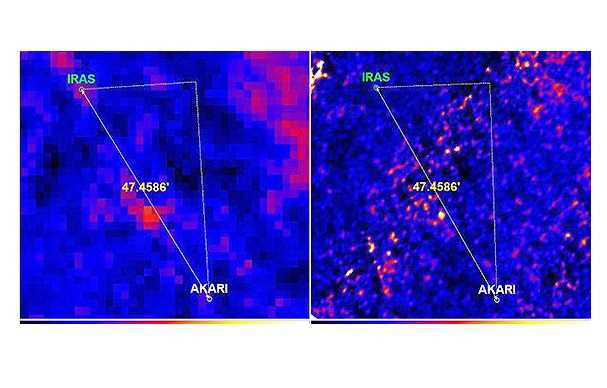The mystery of the planet nine: the new clues about the potential candidate for the boundaries of the Solar System

The astronomers would have undivuted the planet (with an extremely elliptical and slow orbit) comparing the infrared satellite data collected after 23 years
They have been looking for it for years and seems unreliable: it is the Planet Nine, The Ninth planet of the Solar System which would be beyond Neptune. The first to hypothesize its existence were the astronomers Mike Brown and Kostantin Batyng of the Institute of Technology in California (Caltech): according to their observations, the presence of this hypothetical world could explain the unusual grouping of objects oriented around the same orbital level in the Kuiper banda region beyond Neptune rich in frozen bodies like Pluto. The presence of the planet, with its gravity, would be the responsible of the anomalous orbits of these celestial bodies. However, over the years, the numerous research has not been outcome.
But now an international group of astronomers led by Terry Long Phan of the TSING HUA National University of Taiwan may have discovered the most interesting candidate so far identified on the basis of Infrared data collected more than two decades of distance.
Because it is so difficult to identify the planet nine
According to estimates, planet nine would have one mass similar to that of Neptuneabout 7 times the mass of the Earth and would edit at an immense distance, between 300 and 520 astronomical units (UA) from the sun. It is worth remembering that an astronomical unit is equivalent to about 150,000,000 kilometers. Its extreme distance makes direct detection a challenge And it is understandable that his existence has not yet been proven with certainty: being so far from the soland reflects very little light and it would be So cold that they emit very little heat in the form of infrared radiation And for this it is difficult to identify. The planet nine would have anExtremely elliptical and slow orbit: To carry out a complete tour it would take between 10 thousand and 20 thousand years.
How the planet was identified
To look for the planet nine the researchers entrusted themselves to Archive data of the IRAS spatial telescopes (from 1983) and Akari (from 2006). The astronomers were able to compare the infrared maps of the sky provided by the two telescopes to understand if After 23 years a weak infrared source had moved. The data made it possible to look for bright sources located between 7 and 17 terrestrial masses at a distance between 500 and 700 astronomical units. The astronomers would have identified a weak dot that appeared in a position in the images of Iras of 1983 and a distance of about 47.4 minutes of arc in the 2006 Akari data. The celestial object has moved slightly in the sky over the age of 23, which is compatible with a very far -distant body as the possible planet nine.
The extreme distance
The orbit of the hypothetical planet nine remains a mystery. The alleged orbit would lead him to sidereal distances, more far away than the known planets. The estimates say that the celestial body would be 700 UA, beyond 105 billion kilometers from the sun (Neptune, the farthest planet is located at 4.5 billion kilometers from the sun). According to the first author of the Terry Long Phan study, a possible explanation is that the planet was formed closer to the sun, probably in the same area where Jupiter, Saturn, Uranus and Neptune were born and then pushed outwards in the first days of the Solar System due to gravitational interactions
Doubts
Despite the enthusiasm, the discovery remains not confirmed because Astronomes have not been able to completely determine the orbit of the Planet candidate nine. There are still doubts and the planet nine must be also observed to confirm or deny this hypothesis. The study presented is still in pre-printthat is, it has yet to be subjected to an equal review before being published in a scientific magazine. Among the most critical scientists Mike Brownwhich first hypothesized the existence of the Planet Nine. According to the astronomer in the new study, the possibility that the observation of the Planet Novia a false positivethat is, that it is not a planet. The hunt is therefore not yet completed and new clues could arrive with the Vera Rubin telescope, in Chile, which will enter at full speed by 2026 in search of objects that vary brightness, just like the planet nine.







